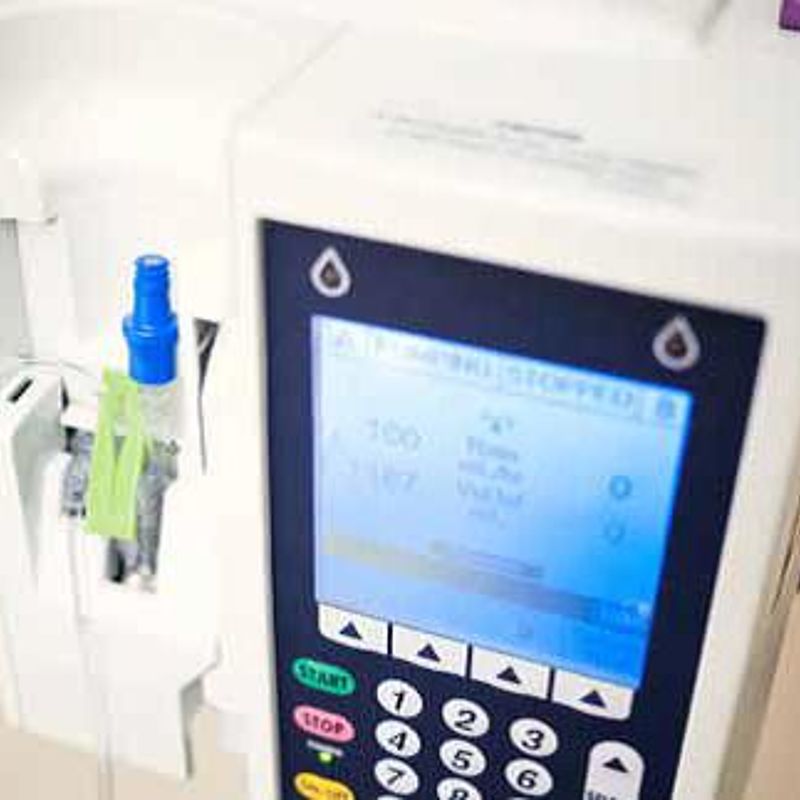
Valid calibration of infusion pumps
Challenge
Infusion pumps deliver medications at programmed rates or intervals. However, incorrect doses can occur if fluids are delivered at inaccurate flow rates, particularly drugs with narrow therapeutic margins, short half-life, high concentration, or the very low flow rates typical for newborn children.
Therefore, accurate and precise control of flow rates can be critical for patient safety, not least as the use of infusion pumps is wide-scale. For example, about 80-90 % of hospitalised patients in the UK receive intravenous therapy in this way.
A European Union directive specifies essential safety and performance requirements without mandating specific technical solutions — although guidance refers manufacturers to the voluntary International Electrotechnical Commission (IEC) standard IEC 60601-2-24: 2012 Particular requirements for the basic safety and essential performance of infusion pumps and controllers.
This IEC standard guides manufacturers, laboratories, and hospitals on electrical safety and performance testing of infusion devices. It connects to a set of standards designed to ensure the safety of medical electrical equipment, one being IEC 60601-1 that defines basic safety and performance requirements for medical electrical equipment.
The EMRP project Metrology for Drug Delivery (MeDD) highlighted that these standards, most significantly IEC 60601-2-24, did not address the causes of flow measurement errors or anticipate the need for robust and accurate calibration procedures. Uncertainty calculations and requirements for measurement equipment with adequate specifications were overlooked and descriptions of flow rate variability using ‘trumpet curves’ were hard to follow. Further vulnerabilities of low flow infusion devices to measurement errors were identified, such as due to expansion of infusion lines, issues related to use of multiple devices, and dead volumes in syringes. Given market developments, in 2017 IEC 60601-2-24 was due for review, but the relevant technical committee lacked expertise in flow metrology solutions.
Solution
The EMPIR project Standards and e-learning course to maximise the uptake of infusion and calibration best practices compared calibration methods developed in MeDD and proposed amendments to international standards.
At low flow rates infusion device analysers, that are used in hospitals to check the accuracy of infusion pumps, were found to produce errors above the maximum suggested by infusion pump manufacturers. Instead, a gravimetric test method was recommended.
The project team requested representation at IEC subcommittee 62D/MT23, and in April 2017 presented evidence supporting metrology best practices and terminology in IEC 60601-2-24.
As the coinciding revision of IEC 60601-1 delayed development of IEC 60601-2-24 and with many of the same experts on the Association for the Advancement of Medical Instrumentation (AAMI) Infusion Device Committee, in June 2018 the project representative supported prioritised revision of the AAMI standard Technical Information Report (TIR) 101: Fluid delivery performance testing for infusion pumps.
Further suggestions were also provided to IEC 62D/MT23, including proposing a Metrology Annex.
Impact
During the subsequent MeDDII project its coordinator joined the AAMI TIR 101 revision committee. Suggestions made at its January 2020 meeting in Washington DC resulted in the acceptance of all fifteen comments developed during the prior project, plus a majority of the thirteen arising from MeDDII.
Overall, about 90% of these comments were adopted, including improved testing procedures, descriptions of suitable equipment, ambient conditions specification, model equations, and uncertainty calculations. A consensus was reached to adopt proposed methods to translate measurements of flow rate variability into clinically relevant metrics to replace the complex ‘trumpet curves’.
The AAMI standard TIR 101:2021 was published in October 2021, including valid definitions of fluid delivery performance test methods for all infusion pump use conditions. This standard provides clinically relevant performance data, including reference to EURAMET’s Calibration Guide No. 19.
The third edition of IEC 60601-2-24 was scheduled for publication in 2023, with TIR101 expected to form the basis of flow measurement provisions.
The project supported the development of standards incorporating robust calibration procedures, equipment and conditions, capable of supporting accurate drug delivery results and reduced risks of adverse patient incidents
- Category
- EMPIR,
- Health,
- Standardisation,
